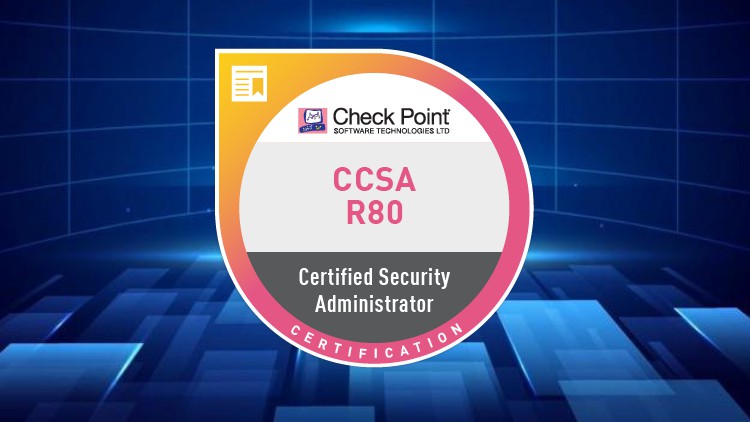
This is what you looking for!!
What you will learn
Here i give you all what you need to prepare for your final exam.
Here i help you you to reach the best score in the final exam.
Here i teach you the right way to pass the exam.
Here i take you to get certified.
Description
The Check Point Certified Security Administrator (CCSA) R80 course is a certification program designed for security professionals who are responsible for the day-to-day administration and management of Check Point security solutions. The CCSA R80 certification program covers the fundamentals of Check Point security technologies and solutions, including firewall policies, Virtual Private Network (VPN) technologies, and security management.
Participants will learn how to install, configure, and manage Check Point Security Gateway and Management Software Blade systems on the GAiA operating system. They will also learn how to implement and maintain basic network security, troubleshoot common security issues, and perform security management tasks using SmartConsole and SmartDashboard.
The CCSA R80 certification is intended for individuals who are starting their careers in network security or are looking to demonstrate their understanding of Check Point security solutions. Upon completion of the CCSA R80 program and certification, participants will have the knowledge and skills to effectively manage Check Point security solutions in real-world environments.
The Check Point Certified Security Administrator (CCSA) R80 certification program covers a range of topics related to Check Point security technologies and solutions. Some of the key topics that may be covered in the CCSA R80 program include:
- Installation, configuration, and management of Check Point Security Gateway and Management Software Blade systems on the GAiA operating system.
- Firewall policies and rule bases.
- Virtual Private Network (VPN) technologies.
- Basic network security concepts, such as firewall rule base management, network address translation (NAT), and user authentication.
- Security management using SmartConsole and SmartDashboard.
- Troubleshooting common security issues.
- Basic VPN concepts, such as site-to-site and client-to-site VPNs.
- ClusterXL and Load Sharing.